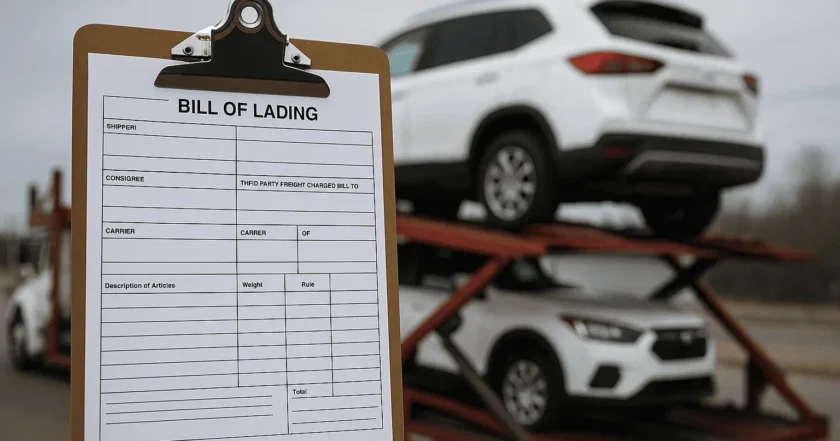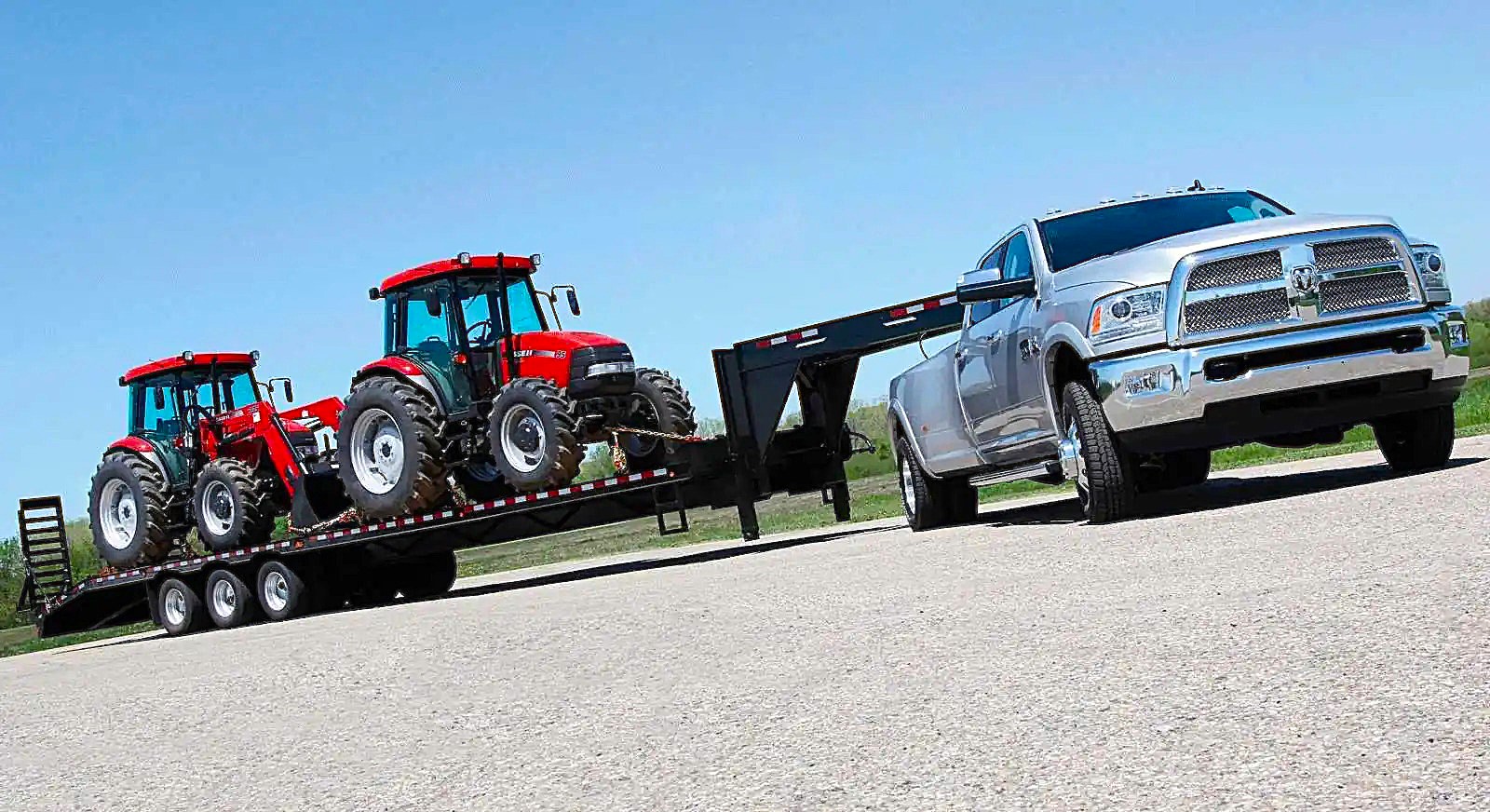The Bill of Lading acts as a shipment document that is key to sending a vehicle from one destination to another. This crucial document serves as a receipt, contract, and proof of ownership during transport to give rightful assurance to the client that the vehicle will arrive on time at the right intended destination.
What Is a Car Bill of Lading?
The auto transport bill of lading (BOL) is a crucial document that accompanies vehicle shipping. It acts as a receipt, contract, and document of title while holding details about the car type, quantity, and destination. The carrier issues the BOL, which must be signed by you and the driver or your authorized representative at both pickup and delivery.
For instance, in order to transfer a custom-made Cadillac from Los Angeles to Montana, an inspection of the vehicle takes place between you and the driver, accompanied by the signing of the Bill of Lading, before the vehicle is loaded. When delivered, the Bill of Lading undergoes a second inspection, and a second copy of the original Bill of Lading is given to you.
This document guarantees that the carrier has all the information required to deal with and invoice the shipment correctly. Moreover, your protection lies in legalities. Whether the transportation of your vehicle is by truck, train, or plane, the Bill of Lading is still one of the most important documents in the shipping process.
Sample of Vehicle Bill of Lading
Are you getting ready to bill a shipment of your car? It’s not as hard as you might imagine. Depending on the carrier or type of shipment, the format of BOLs varies; however, each and every Bill of Lading needs to incorporate certain details that help in the smooth conduct of the transport operation.
These key elements include the vehicle details, VIN, origin and destination addresses, dates of pick-up and delivery, and signatures of all parties involved: you, the carrier, and the receiver.
You can use this Auto Transport Bill of Lading Form PDF free of charge as a handy reference to ensure your paperwork is completed correctly and does not incur any errors en route.
Key Sections and How to Fill Out a Bill of Lading Form for Car Transport?
Shipping a single automobile or an entire fleet requires a complete and accurate BOL to function smoothly without falling foul of the law. Standard components that every car transport Bill of Lading will have are:
- Names, addresses, and phone numbers of origin and destination points
- Type and quantity of item(s) being shipped
- Order or pickup number
- The weight of the cargo
- The payment amount to the carrier
- Signature lines for shipper, receiver, and driver
All of these parts are important to a good shipment, so being accurate is important.
1. Order Information
At the upper-right corner, the order number, number of units, and document date are located. Keep it for billing, invoicing, and communication with the shipper.
2. Origin, Destination, and Scheduling
Origin and destination information usually consists of cities and states. Then there is a scheduling block showing the earliest pickup and the latest delivery dates. Unlike other freight, car transport is focused on dates as opposed to exact times because loading vehicles is a labor-intensive process.
Special instructions such as residential delivery or vehicle modifications would also appear here.
3. Vehicle Details
This portion is the “very core of the car hauler’s BOL.” The vehicle types and VINs are all registered, but need to be verified with certainty to avoid shipment errors. Operational status, like keys, inop, or operable, is indicated, and damages existing at pickup and delivery are marked with drawings.
4. Signatures and Dates
Pickup and delivery are confirmed by signature lines for you, the driver, and for the receiver. Dates are extremely important to ensure that no disputes may arise later with respect to the time of shipment.
When Do You Need the Bill of Lading?
When you are moving a car, a car BOL is very important. This is because it performs many important roles, including proof of your contract with the transporter, a receipt that the transporter has taken the vehicle without any damages, and also being a ‘document of title’, meaning ownership of the vehicle.
In case of any disputes, damages, or losses, a Bill of Lading that has not been filled out appropriately can cause grave inconveniences.
Evidence of a Contract Between Shipper and Carrier
You need a Bill of Lading to witness your shipping contract. While the BOL is not specifically the auto transport contract, it does serve to prove the contract formed between the carrier and shipper. It states important information about what vehicle is being shipped or what goods are being carried, and from where to where.
For example, if the shipping is of the Mercedes SLK from Tampa to Sacramento, the BOL records all details pertaining to the shipment.
Receipt of Freight Services and Goods
The carrier issues the car Bill of Lading at the pickup with the purpose of serving as a receipt, evidencing that your freight was received in good condition. It is given to you after being signed as evidence of carrier liability should your shipment be lost, damaged, or destroyed. The photos included in the Bill of Lading assist in the verification of vehicle condition.
Document of Title and Ownership
For the Bill of Lading, being a document of title means that ownership legally shifts to the holder of it, usually the consignee. While making an original shipment for oneself, the Bill of Lading is the document representing legal ownership for a third party.
Importance in Claims and Disputes
Generally, the Bill of Lading is indispensable while claiming compensation for loss, damage, or disputes. Without it, proving a case can be hard and can cause delays and inconveniences.
What Other Documents Do I Need During Car Transport?
The discharging of a vehicle in a port requires a couple of documents. Here is the checklist of documents for a vehicle shipment:
- Dock Receipt – These papers confirm that your vehicle is now in the charge of the carrier. Tempus Logix will provide the dock receipt to serve as the beginning point for creating the Bill of Lading for your shipment.
- Insurance – You can, if you like, insure your car, but carriers must be insured. Tempus Logix only works with insured transporters.
- Original Title and Registration – The title is proof of ownership, while the registration certifies that the vehicle is roadworthy. However, depending on the place of destination, you may have to produce one or both.
- Authorization from a Lienholder – In case there is a lien on your car, a notarized letter from the lienholder must allow shipment to be conducted, especially for port transport.
- Gate Pass – It is a pass or gate entry provided upon picking up or upon release from ports or auto auctions. It is issued along with a dock receipt, Bill of Lading, and delivery order.
- Photo Identification – Valid identification will be needed to verify both the shipper and the receiver.
Also, calculate your transport cost ahead of time to ensure that you have all the documents ready and budgeted for shipment.
A Bill of Lading is the record that defines what was agreed, what was shipped, and the car’s condition at hand-off. Treat it as a working document, not just paperwork. Check it closely at pickup and delivery – the accuracy of this form can decide the outcome if problems arise later.





